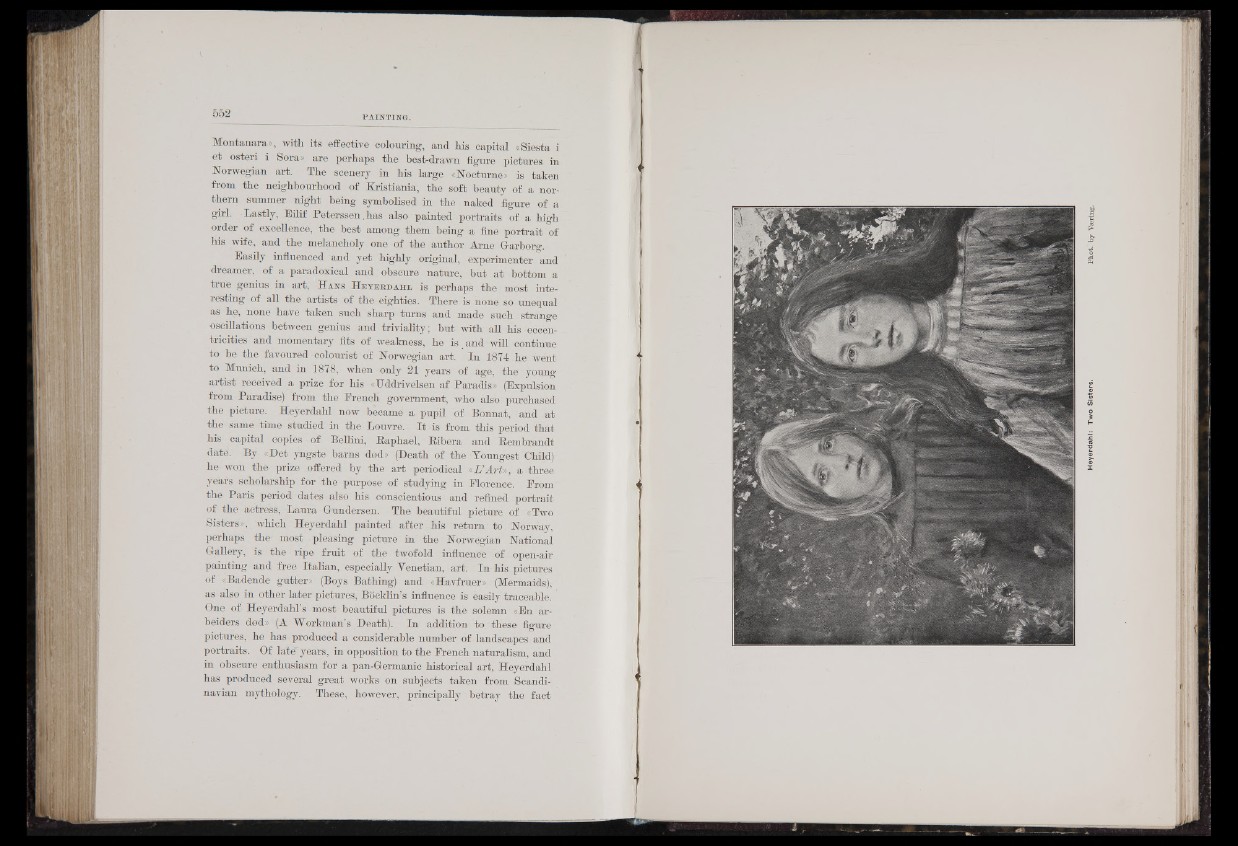
Montanam», with its effective colouring, and Ms capital «Siesta i
et osteri i Sora» are perhaps the best-drawn figure pictures in
Norwegian art. The scenery in his large «Nocturne» is taken
from the neighbourhood of Kristiama, the soft beauty of a northern
summer night being symbolised in the naked figure of a
girl. Lastly, Eilif Peterssen.has also painted portraits of a high
order of excellence, the best among them being a fine portrait of
his wife, and the melancholy one of the author Arne Garborg.
Easily influenced and yet higMy original, experimenter and
dreamer, of a paradoxical and obscure nature, but at bottom a
true genius, in art, H a n s H e y e r d a h l is perhaps the most interesting
of all the artists of the eighties. There is none so unequal
as he, none have taken such sharp turns and made such strange
oscillations between genius and triviality; but with all Ms -eccentricities
and momentary fits of weakness, he is and will continue
to be the favoured colourist of Norwegian art. In 1874 he went
to Munich, and in 1878, when only 21 years of age, the young
artist received a prize for his «Uddrivelsen af Paradis» (Expulsion
from Paradise) from the French government, who also purchased
the picture. HeyerdaM now became a pupil of Bonnat, and at
the same time studied in the Louvre. I t is from tMs period that
his capital copies of Bellirn, Raphael, Ribera and Rembrandt
date. By «Det yngste bams dad» (Death of the Youngest Child)
he won the prize offered by the art periodical «L ’ArU, a tMee
years scholarsMp for the purpose of studying in Florence. From
the Paris period dates also Ms conscientious and refined portrait
of the actress, Laura Gundersen. The beautiful picture of «Two
Sisters»";'. wMch HeyerdaM painted after his return to Norway,
perhaps the most pleasing picture in the Norwegian National
Gallery, is the ripe frmt of the twofold influence of open-air
painting and free Italian, especially Venetian, art. In Ms pictures
of «Badende gutter» (Boys Bathing) and «Havfruer» (Mermaids)r
as also in other later pictures, Bocklin’s influence is easily traceable.
One of HeyerdaM’s most beautiful pictures is the solemn «En ar-
beiders dod» (A Workman’s Death). In addition to these figure
pictures, he has produced a considerable number of landscapes and
portraits. Of late'years, in opposition to the French naturalism, and
in obscure enthusiasm for a pan-Germanic Mstorical art, Heyerdahl
has produced several great works on subjects taken from Scandinavian
mythology. These, however, principally betray the fact
Heyerdahl: Two Sisters. Phot, by Væring.